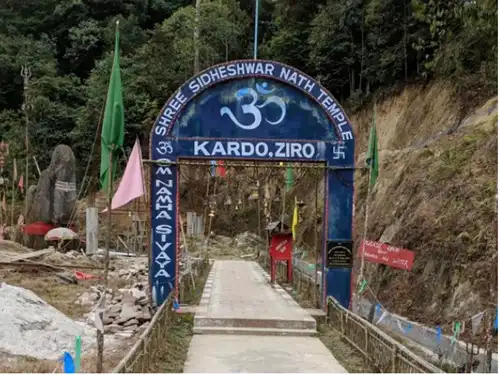Nestled in the serene expanse of the Lower Subansiri District, Ziro Valley in Arunachal Pradesh is not just a picturesque town but also a place steeped in spirituality and reverence. One of the significant highlights for pilgrims and tourists alike is the Siddheshwar Nath Temple, located in the dense Kardo Forest. This divine shrine has captured the interest of many due to its mystical aura and the legends that surround its discovery.
The Discovery: Siddheshwar Mahadev Temple
The history of the Siddheshwar Nath Temple is as mystical as the temple itself. In 2004, a young woodcutter was felling a tree in the dense Kardo jungle during the holy month of Shravan. Much to his amazement, the tree did not fall in the expected direction but instead changed course and fell a few kilometers away. Puzzled by this anomaly, the woodcutter searched the area and discovered a stone protruding from the ground. Recognizing the presence of divine energy, he sought the guidance of a local priest.
Upon clearing the area, they uncovered a massive natural Shiva Linga, along with carvings of Goddess Parvati and Lord Kartikeya. To the left of the Linga was a depiction of Lord Ganesha, and beneath the earth lay a portion of Nandi, Shiva’s vehicle. The presence of these deities in their natural forms added to the sanctity of the site, leading to its establishment as the Siddheshwar Nath Temple.
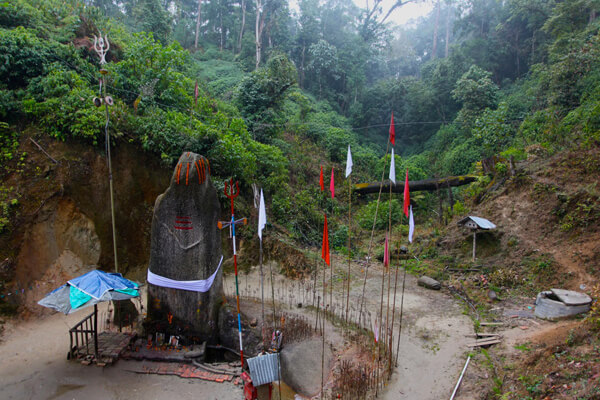
Spiritual Significance
The Siddheshwar Nath Temple is renowned for housing the world’s largest natural Shiva Linga, standing at an impressive 25 feet tall and 22 feet in circumference. Unlike traditional temples where Shiva Lingas are sculpted or carved, this one has formed naturally over time, adding to its mystique and spiritual allure. The Times of India
Adjacent to the Shiva Linga is a natural rock structure worshipped as Mata Parvati, the divine consort of Lord Shiva. This sacred site holds significance in Hindu mythology, symbolizing the eternal bond between Shiva and Parvati. Another unique feature of the temple is a rock formation resembling the trunk of an elephant, worshipped as Ganesha, the beloved elephant-headed deity revered as the remover of obstacles and the patron of wisdom.
The temple’s location in the Kardo Forest adds to its spiritual ambiance. The perennial flow of water at the base of the Linga and the constant presence of mist create an atmosphere conducive to meditation and reflection. Devotees flock to the temple to offer prayers and seek blessings from the divine, especially during auspicious occasions like Maha Shivaratri.
The Journey to Siddheshwar Nath
Reaching the Siddheshwar Nath Temple is an adventure in itself. Located approximately 6 km from Hapoli, the main market area of Ziro, the temple is accessible by foot or a taxi ride through the picturesque landscapes of the Apatani Plateau. The journey takes visitors through lush green valleys, dense rhododendron forests, and rocky outcrops, offering glimpses of the rich biodiversity of the region.
As one approaches the temple, the air grows cooler, and the forest denser, creating a sense of tranquility and anticipation. The morning mist clings to the hillsides, adding a mystical charm to the surroundings. Upon arrival, visitors are greeted by the sight of the modest stone structure of the temple, surrounded by ancient trees and a palpable sense of divine energy.
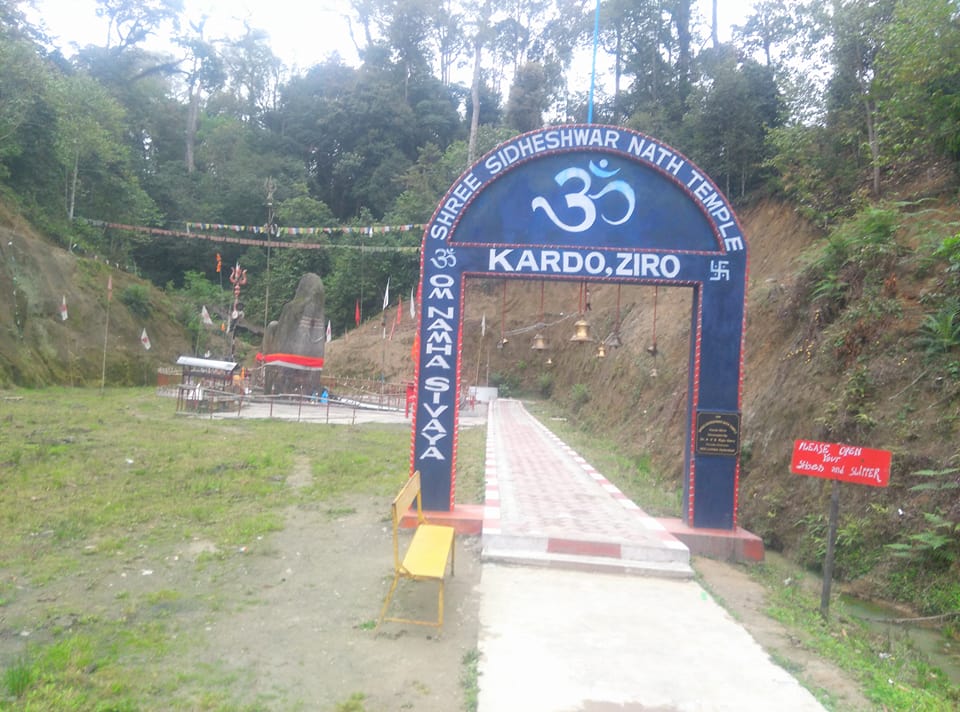
Rituals and Offerings
The rituals at the Siddheshwar Nath Temple are simple yet profound. Unlike the elaborate ceremonies of urban temples, the worship here involves straightforward offerings of milk and wildflowers. Devotees approach the Shiva Linga, pour milk over it, and offer prayers, seeking blessings for well-being and prosperity.
An elderly woman, a regular visitor to the temple, shared that her family has been coming to this sacred site long before the temple was built. They recognized this as sacred ground, long before stone was laid. This continuity of faith and devotion underscores the deep spiritual connection the locals have with the place.
Cultural Context: The Apatani Tribe
Ziro Valley is home to the Apatani tribe, known for their unique customs and harmonious relationship with nature. The Apatanis practice sustainable agriculture, cultivating rice and fish in the same fields, a method that has been passed down through generations. Their traditional houses, adorned with bamboo and thatch, blend seamlessly into the landscape, reflecting their deep respect for the environment.
The Apatani people also have a rich cultural heritage, with festivals like Dree and Mopin celebrating their agricultural practices and spiritual beliefs. Visitors to the Siddheshwar Nath Temple often have the opportunity to witness these cultural festivities, adding to the richness of their experience.
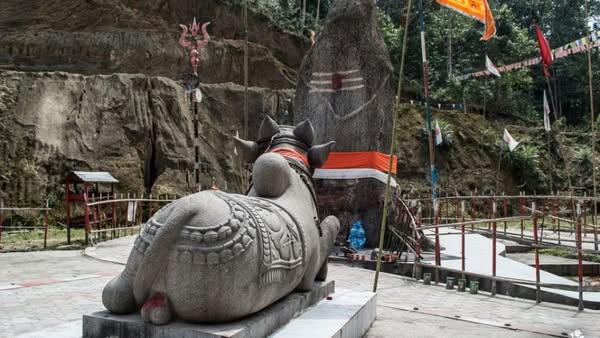
Nearby Attractions
In this guide, we’ll take you through nearby attractions and experiences that perfectly complement a visit to this sacred temple.
Kardo Forest: Nature’s Sanctuary
Before we venture far, it’s important to appreciate the immediate surroundings of the temple. The Kardo Forest itself is a breathtaking natural attraction.
- Biodiversity: Home to a variety of flora and fauna, including rhododendrons, orchids, and ferns, the forest is a living museum of Himalayan biodiversity. Birdwatchers will delight in spotting species like hornbills and sunbirds.
- Walking Trails: Gentle trails through the forest allow visitors to connect with nature. Walking under the canopy of ancient trees, listening to the rustling leaves and distant chants from the temple, creates a sense of peaceful meditation.
- Photography: Early mornings and late afternoons provide soft, mystical light perfect for capturing the mist weaving through the trees and the temple’s stone structure peeking through the foliage.
A visit to the Kardo Forest is an essential part of experiencing the sacred atmosphere of the temple and its surroundings.
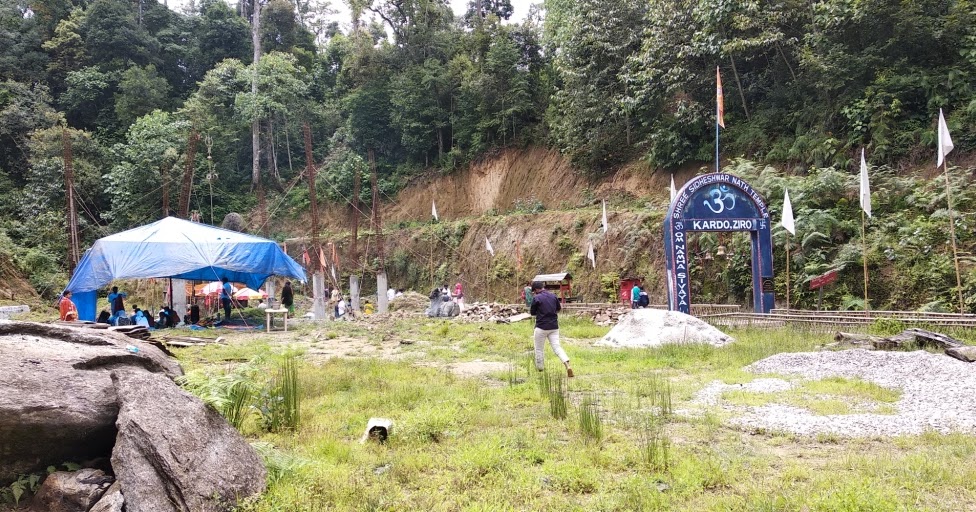
Ziro Valley: Terraced Rice Fields and Rolling Hills
Ziro Valley itself is a postcard-perfect destination. Surrounding the temple are sprawling terraced rice fields, gently rolling hills, and pine-clad landscapes that create a serene backdrop.
- Cultural Significance: The Apatani tribe, the indigenous people of Ziro Valley, have cultivated these terraced fields for centuries. Their agricultural practices, particularly rice-fish farming, are sustainable and culturally rich.
- Photography & Scenic Walks: The terraced fields are especially stunning at sunrise and sunset when the light casts long shadows across the hills. Walking through these fields gives travelers an immersive experience in rural life.
- Seasonal Beauty: Each season brings a unique charm—lush green terraces in the monsoon, golden rice fields during harvest, and misty hills in winter.
Spending a morning wandering the valley paths offers a perfect blend of nature, culture, and tranquility.
Talley Valley Wildlife Sanctuary
Approximately 30–35 km from Siddheshwar Nath Temple, the Talley Valley Wildlife Sanctuary is a must-visit for nature enthusiasts.
- Wildlife: The sanctuary is home to elusive animals like red pandas, Asiatic black bears, and various deer species. Birdwatchers can spot hornbills, pheasants, and the rare Blyth’s tragopan.
- Trekking Opportunities: Several trekking trails weave through dense forests and high ridges, offering stunning panoramic views of the Eastern Himalayas.
- Photography & Observation: Early morning or late afternoon visits are ideal for capturing wildlife or mist-filled valleys.
A half-day or full-day excursion to Talley Valley allows visitors to explore the rich ecological diversity of Arunachal Pradesh while staying close to Ziro.
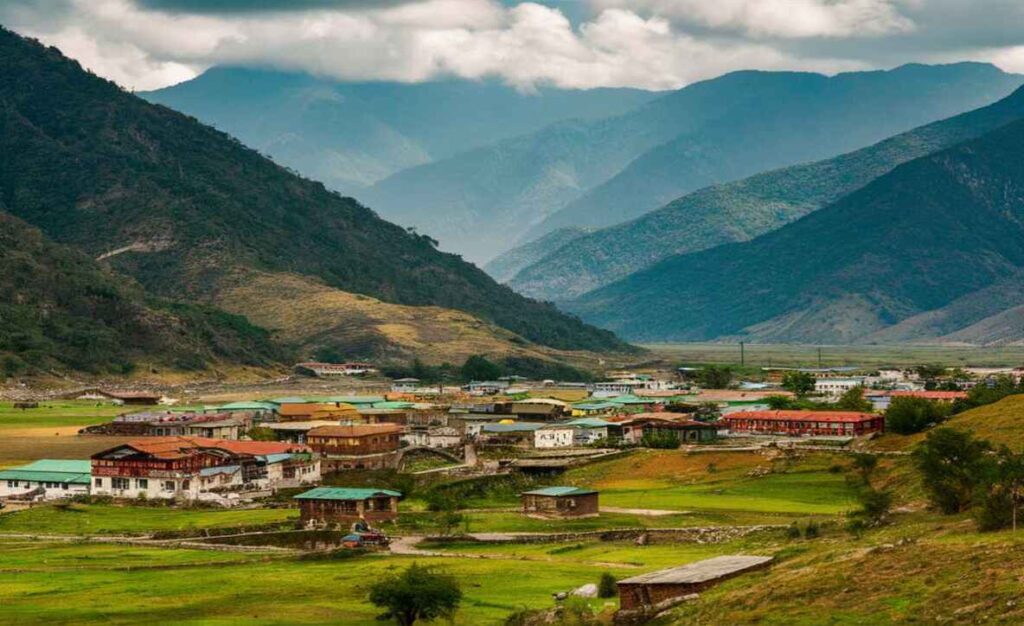
Apatani Tribal Villages
A visit to the Siddheshwar Nath Temple is also a gateway to the cultural heritage of the Apatani tribe. Several villages are located just a few kilometers from the temple.
- Traditional Architecture: The houses are built from bamboo, timber, and thatch, often decorated with intricate carvings. The architecture blends perfectly with the surrounding hills and fields.
- Local Crafts: Visitors can witness traditional weaving, bamboo work, and pottery. Purchasing local crafts directly supports the community.
- Festivals & Cultural Interaction: Timing your visit with festivals like Dree or Mopin allows you to witness vibrant dances, rituals, and offerings, providing an authentic cultural immersion.
Interacting with locals offers a unique perspective on how spirituality, agriculture, and daily life intersect in Ziro Valley.
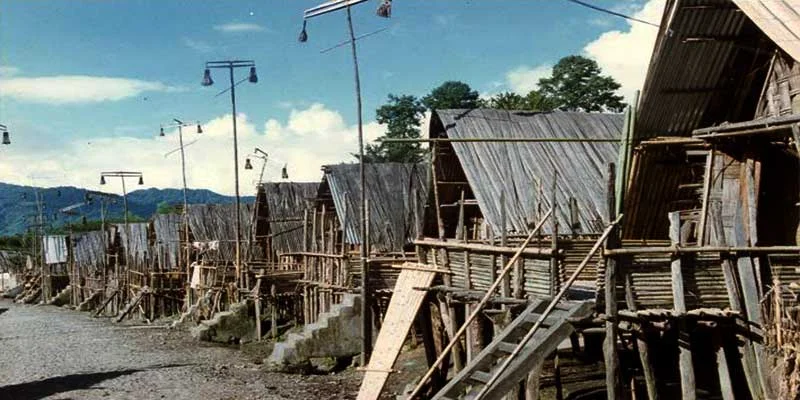
Dree Festival Grounds
About 15–20 km from the temple, the Dree Festival grounds offer a festive insight into the life of the Apatani people.
- Cultural Experience: This agricultural festival celebrates sowing and harvest with prayers for bountiful crops. Traditional music, dances, and elaborate rituals are performed, offering visitors a vivid cultural spectacle.
- Participatory Experience: Visitors can observe rituals, partake in local foods, and understand the symbolic significance of each ceremony.
- Photography: The colorful attire, dynamic dances, and ceremonial settings create excellent photography opportunities.
Planning your temple visit around festival time adds a cultural richness to the spiritual journey.
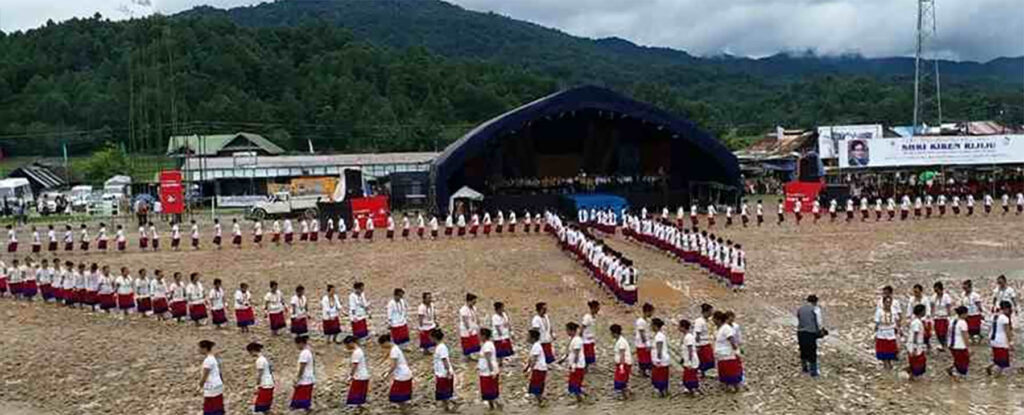
Pine-Clad Hills & Scenic Viewpoints
The areas around Siddheshwar Nath Temple are dotted with small hills and ridges offering panoramic views of Ziro Valley.
- Sunrise & Sunset: Catching the valley bathed in golden light from a hillside viewpoint is unforgettable. The temple’s stone structure appears even more mystical from a distance.
- Short Treks: Gentle treks from the temple to nearby ridges provide a mix of exercise, nature, and scenic rewards.
- Photography & Meditation: The ridges offer quiet spots perfect for meditation or simply soaking in the serene surroundings.
Even a short 1–2 hour trek in these hills can make your visit memorable and immersive.
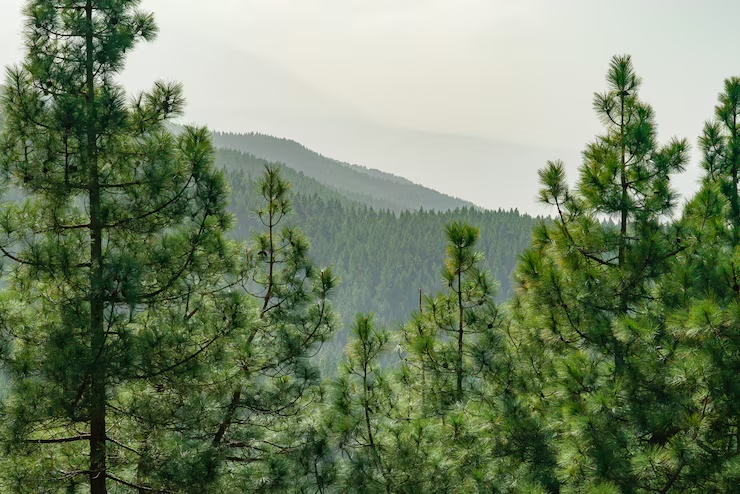
Small Streams and Waterfalls
The Kardo Forest and Ziro Valley are dotted with small streams and waterfalls. These natural water features enhance the peaceful ambiance of the temple area.
The Role of Streams in the Spiritual Landscape
Water has always held a sacred place in Hindu traditions, and the streams surrounding Siddheshwar Nath Temple are no exception.
- Ritual Significance: Many devotees carry water from nearby streams to perform purification rituals and offerings at the temple. The cool, pristine waters are considered spiritually cleansing.
- Meditative Spaces: The gentle gurgling of flowing water creates a naturally meditative atmosphere. Pilgrims often sit near the streams to reflect, chant, or meditate before entering the temple.
- Symbol of Life: These streams sustain the local flora and fauna, reminding visitors that spirituality and nature are deeply interconnected.
Walking alongside these streams, it’s easy to feel a sense of calm that complements the temple’s energy, making your visit an all-encompassing spiritual and sensory experience.
Hidden Gems: The Small Streams
Unlike large rivers, the small streams near the temple are intimate and quiet. Each stream offers its own unique charm:
- Shaded Pathways: Many streams wind through dense forest areas, with sunlight filtering through leaves and casting sparkling reflections on the water’s surface.
- Cool Refuge: Especially during warmer months, the streams provide a refreshing retreat. Travelers often dip their hands or feet in the water to feel rejuvenated after a forest trek.
- Photography Opportunities: Early morning mist combined with flowing water makes for captivating photos, especially when paired with the temple’s stone structures or moss-covered rocks.
Walking along these streams allows you to discover hidden pockets of nature, from tiny pools teeming with freshwater fish to natural stone bridges formed over centuries.
Waterfalls: Nature’s Dramatic Touch
As you venture slightly further from the temple, the terrain becomes more rugged, giving rise to several small waterfalls. These falls vary in size—from gentle cascades to more dramatic drops—and each has its own story:
- The Serenity of Cascades: Small, tiered waterfalls create a layered visual and auditory experience. The soft splashing sounds invite visitors to pause and simply absorb the surrounding beauty.
- Hiking to Hidden Falls: Many waterfalls require a short trek through forested paths, adding an element of adventure. As you climb higher, the air grows cooler, and the mist from the falls gently brushes your face.
- Natural Pools: Some waterfalls form shallow pools at their base, where locals and travelers alike pause to refresh and meditate.
The visual and auditory harmony created by these waterfalls enhances the temple visit, offering a holistic experience where spirituality meets raw natural beauty.
Flora and Fauna Around Streams and Waterfalls
The streams and waterfalls are more than just scenic features—they are ecosystems brimming with life:
- Flora: Mosses, ferns, and wildflowers thrive along the moist banks. The rhododendrons and orchids in nearby areas create bursts of color, especially during spring.
- Fauna: Birds, small mammals, and insects are drawn to these water sources. Sunbirds and kingfishers are frequent visitors, adding movement and sound to the tranquil environment.
- Aquatic Life: Clear pools support small fish and amphibians, offering a glimpse into the valley’s biodiversity.
The close interaction with flora and fauna along streams and waterfalls brings visitors closer to the rhythms of nature and provides countless opportunities for nature photography.
Cultural Connections
The local Apatani tribe also recognizes the sacredness of these streams and waterfalls:
- Ritual Offerings: Some small waterfalls are considered particularly auspicious for ritual offerings during festivals. Locals may leave flowers or small tokens in the water as part of spiritual practice.
- Folklore: Many streams are associated with legends of spirits or divine interventions, creating a sense of mystery and reverence.
- Community Gatherings: Streams and pools often become meeting points where villagers wash, socialize, or gather water, reflecting the integration of nature in daily life.
Exploring these waterways is as much a cultural journey as it is a natural one, giving visitors insight into local beliefs and practices.
Trekking and Adventure Opportunities
Streams and waterfalls around Siddheshwar Nath Temple are not just for passive observation—they’re gateways to adventure:
- Trail Hiking: Follow the water upstream to discover hidden waterfalls or small clearings perfect for picnics and reflection.
- Mossy Rocks and Natural Slides: For the adventurous, some waterfalls create natural slides and rock formations ideal for light climbing or playful exploration.
- Photography Hikes: Early morning hikes capture mist rising from waterfalls, sun rays breaking through trees, and sparkling water pools—perfect for photographers seeking a magical shot.
Every step along these trails brings you closer to the untouched wilderness of Ziro Valley, blending exercise with nature appreciation.
Best Times to Visit Streams and Waterfalls
Timing your visit can enhance the experience:
- Spring (March–May): Streams are flowing steadily, and wildflowers bloom along the banks. Perfect for serene walks and photography.
- Monsoon (June–September): Waterfalls are at their most powerful, but trails can be slippery. Only recommended for experienced trekkers.
- Autumn (October–November): Clear skies and golden sunlight enhance the visual appeal of streams and waterfalls, making it ideal for hiking and sightseeing.
- Winter (December–February): Some streams slow down, and mist creates a magical atmosphere. The cold requires warm clothing, but the scenery is otherworldly.
Experiencing Mindfulness by the Water
Spending time near the streams and waterfalls allows visitors to practice mindfulness:
- Meditation: Sit by a gentle stream, close your eyes, and focus on the sound of flowing water. The surroundings naturally quiet the mind.
- Journaling: Many travelers find it inspiring to write reflections while listening to waterfalls.
- Nature Observation: Observe birds, insects, and the movement of water. This fosters a sense of connection with the valley’s natural rhythms.
These simple activities turn a visit into a deeply restorative experience, blending spirituality and nature.
Travel Tips
- Best Time to Visit: The ideal time to visit the Siddheshwar Nath Temple is between March and October, covering the spring, monsoon, and autumn seasons when the weather is pleasant, and the natural beauty of Ziro is at its peak.
- Accommodation: There are several hotels and homestays in Ziro offering comfortable lodging options for visitors.
- Travel: The nearest airport is Lilabari Airport in Assam, approximately 100 km away. From there, taxis are available to reach Ziro. The nearest railway station is Harmuti in Assam, about 100 km from Ziro.
- What to Carry: Comfortable walking shoes, a light jacket (as temperatures can drop in the evenings), and a camera to capture the scenic beauty.
AQs (10)
Q1. Where is Siddheshwar Mahadev Temple located?
It is situated in the Kardo Forest area, approximately 6 km from Hapoli, the main town of Ziro in Arunachal Pradesh.
Q2. What is unique about this temple?
The temple houses the world’s largest naturally formed Shiva Linga, standing 25 feet tall with a 22-foot circumference.
Q3. How was the Shiva Linga discovered?
In July 2004, a local woodcutter, guided by divine dreams, unearthed the Shiva Linga in the dense forest.
Q4. Is the Shiva Linga self-manifested?
Yes, it is considered a Swayambhu (self-manifested) Shiva Linga, adding to its spiritual significance.
Q5. What are the temple’s features?
The site includes a natural Shiva Linga, a perennial water stream at its base, and nearby structures like a well, havan kund, and bells.
Q6. Are there any legends associated with the temple?
Local beliefs suggest that the site is sacred due to intense tapas performed by Goddess Parvati, offering relief from mental turmoil and ill health.
Q7. When is the best time to visit?
The ideal months are March to October, offering pleasant weather and clear views of the surrounding landscapes.
Q8. How can one reach the temple?
Visitors can take a taxi or trek from Hapoli to the temple. The route is through dirt tracks, offering scenic views of the valley.
Q9. Is there an entry fee?
No, there is no entry fee to visit the temple.
Q10. What festivals are celebrated here?
Major Hindu festivals like Maha Shivaratri and the month of Shravan witness a surge in devotees visiting the temple.

